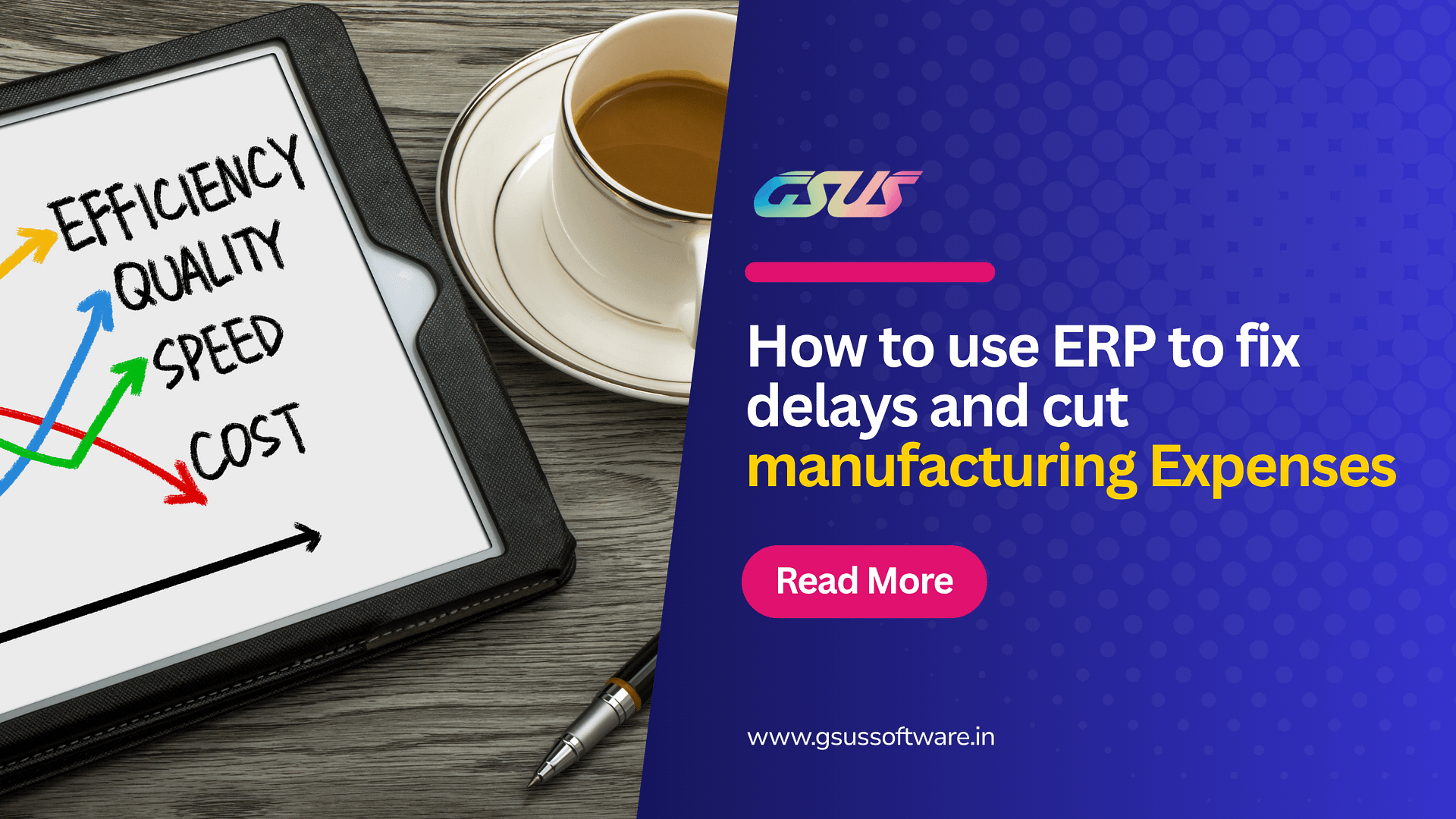In many manufacturing companies, operational delays and rising costs aren’t just caused by machine breakdowns or raw material shortages — they often stem from fragmented data, reactive decision-making, and underused ERP systems.
As someone who has spent over a decade helping manufacturers deploy ERP platforms, I’ve seen this firsthand: the software is installed, but not optimized. In this post, I’ll walk you through how ERP can actually reduce production time and cost — not just in theory, but through data-driven, experienced-backed guidance.
1. The Hidden Cost of Fragmented Operations
Many factories run on disjointed processes: Excel files for inventory, manual job work logs, and delayed inter-department communication. The result?
- Idle machine time due to poor scheduling
- Material shortages because of inaccurate forecasting
- Overproduction or underutilized capacity
According to a Deloitte study, 49% of manufacturers still rely on manual spreadsheets or outdated tools for core operational decisions, leading to inefficiencies and missed opportunities for optimization.
2. ERP Is Not a Magic Wand — It’s a Framework
Let’s be clear: ERP won’t solve inefficiencies unless it’s implemented with clear data discipline and user adoption.
At GSUS Star Software, we’ve audited several ERP-deployed factories where:
- Production heads had no visibility into live WIP (Work-in-Progress)
- Procurement operated on gut feel, not lead-time data
- Supervisors didn’t log downtime in the system due to lack of training
An ERP is only as powerful as the data it captures and decisions it supports. If your floor team logs machine time inconsistently, the ERP will reflect distorted utilization numbers. If BOM revisions aren’t updated in real-time, cost analysis becomes flawed.
3. Common ERP Underutilization Issues in Manufacturing
Here’s what often goes wrong post-implementation:
- Employees don’t understand why ERP matters. It’s seen as “extra work.”
- Managers continue using offline files. Old habits die hard.
- No KPI-based dashboards. Decision-makers lack actionable views.
- Lack of training in cost center allocations. Leads to fuzzy profitability analysis.
According to an IBM study, only 33% of companies are confident in their data for operational decisions 2. That’s because while ERP is present, data literacy and real-time usage are absent.
4. How ERP Reduces Production Time and Cost – When Done Right
Here’s how experienced manufacturers actually gain from ERP:
a. Real-Time Production Planning
With accurate capacity and order data, ERP can dynamically schedule jobs and optimize machine utilization. A client in the auto-components sector reduced changeover time by 18% just by using ERP-generated production sequences.
b. Accurate Material Planning (MRP)
ERP tracks consumption patterns and vendor lead times, helping planners procure just-in-time. This slashed 12% of inventory holding costs for a Tamil Nadu-based chemical manufacturer we worked with.
c. Downtime Tracking and Analysis
Supervisors log downtime with reason codes. Managers see trends. Maintenance gets proactive. One of our clients used this data to automate preventive maintenance schedules — cutting machine idle hours by 25%.
d. Standardized Costing and Profitability per Batch
By associating actual resource usage to jobs, ERP provides accurate batch-wise costing. This helped a sheet metal fabricator identify high-margin SKUs and re-align production priorities.
e. Dashboards That Drive Decisions
Not a 100-page report — just 5 key visual dashboards: WIP status, OEE, Procurement delays, Cost overruns, and Dispatch schedule. This clarity helps GMs make decisions in 10 minutes instead of weekly meetings.
5. Key Recommendations from the Field
From our ground-level implementations at GSUS Star Software, here’s what works:
- Train shopfloor users in their language. Don’t teach ERP. Teach “how to make today’s job easier with ERP.”
- Make data entry frictionless. QR codes for operator login, mobile apps for supervisors.
- Enforce live tracking. Batch entries should not be updated “end of shift.” Real-time is non-negotiable.
Involve production heads in KPI selection. Let them own the dashboards they’ll use.
6. The GSUS Star Software Approach
At GSUS Star Software, we go beyond ERP setup. We partner to optimize the ERP journey for manufacturers across Tamil Nadu and India.
Whether you’re in chemicals, engineering, fabrication, or consumer goods, our team brings:
- Hands-on ERP customizations for real shopfloor challenges
- Data-led dashboards to help you act, not just analyze
- Continuous support to improve adoption across departments
We don’t just implement SAP Business One or custom ERPs. We co-pilot your operational efficiency.
Conclusion
Reducing production time and cost isn’t about installing ERP. It’s about activating it intelligently — with data, adoption, and decision workflows aligned.
If you’re a manufacturer tired of seeing no ROI from ERP, it’s time for an audit. Let GSUS Star Software show you where the value is hidden.
Lets’s consultation
Want to see how ERP can reduce your production cost?
